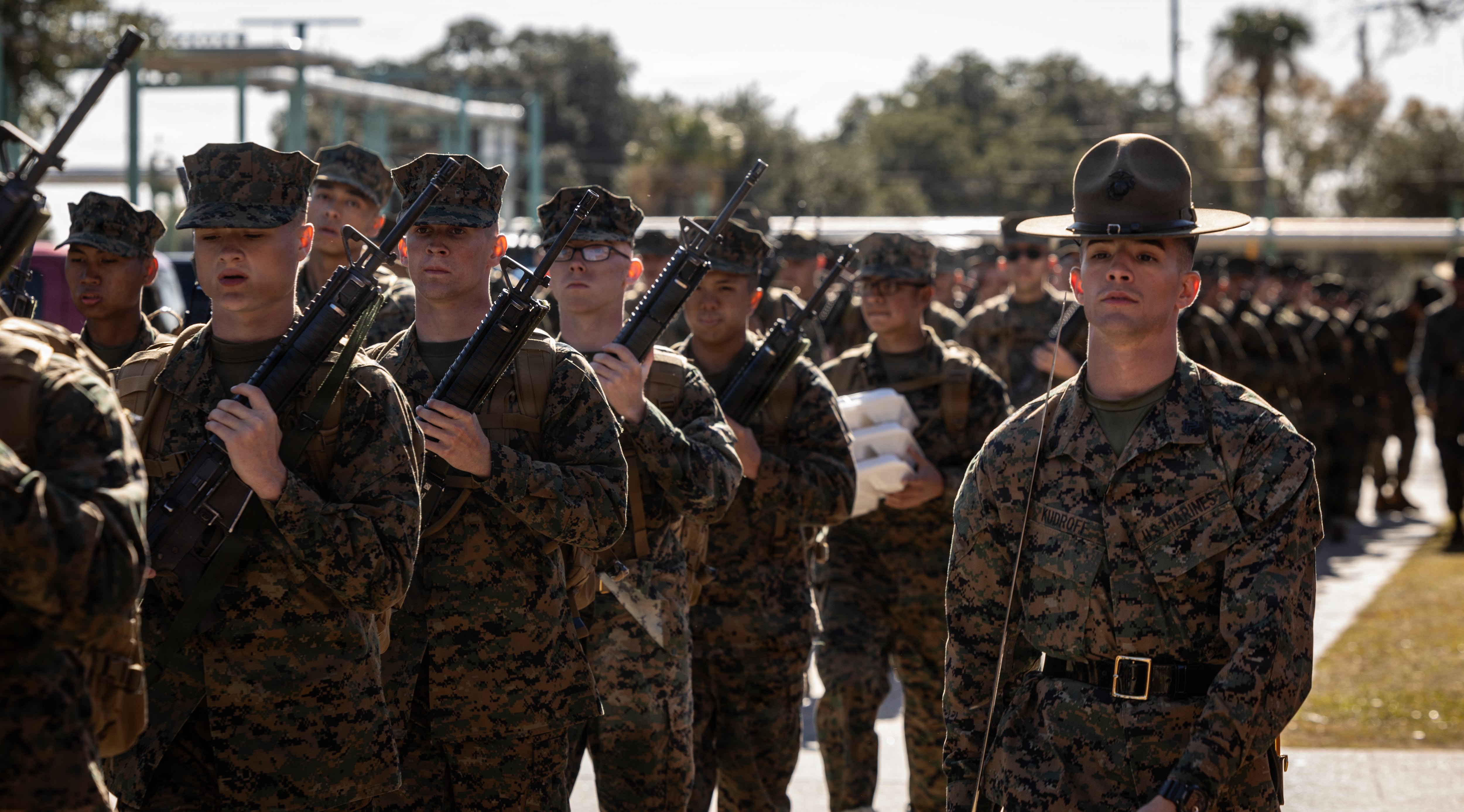Hunkered down behind a thick stone wall, the squad leader hears the rumble of tank treads ahead as a robot breacher plows through city street obstacles followed by its control vehicle a few blocks behind.
The staff sergeant signals squad mates to launch a handheld drone that peeks around dangerous corners, scouting enemy fire positions.
A larger overhead drone, run by the battalion, uses thermal sites to scan the building ahead of them floor-by-floor and spot threats.
One soldier pulls a throwbot from the robotic pack mule that carries most of the team’s gear, ammo, water and batteries and runs around the corner to chuck it through an open window as the squad leader toggles between drone views on a ruggedized tablet.
Another team has tossed a ground robot equipped with chemical sensors and its own thermal cameras down a manhole into the intricate city sewer system. That bot is scouring the dark for potential fighters that could pop out at any moment, or worse, explosive-packed tunnels set to blow when one of the units or enough vehicles pass to trigger detonation.
RELATED
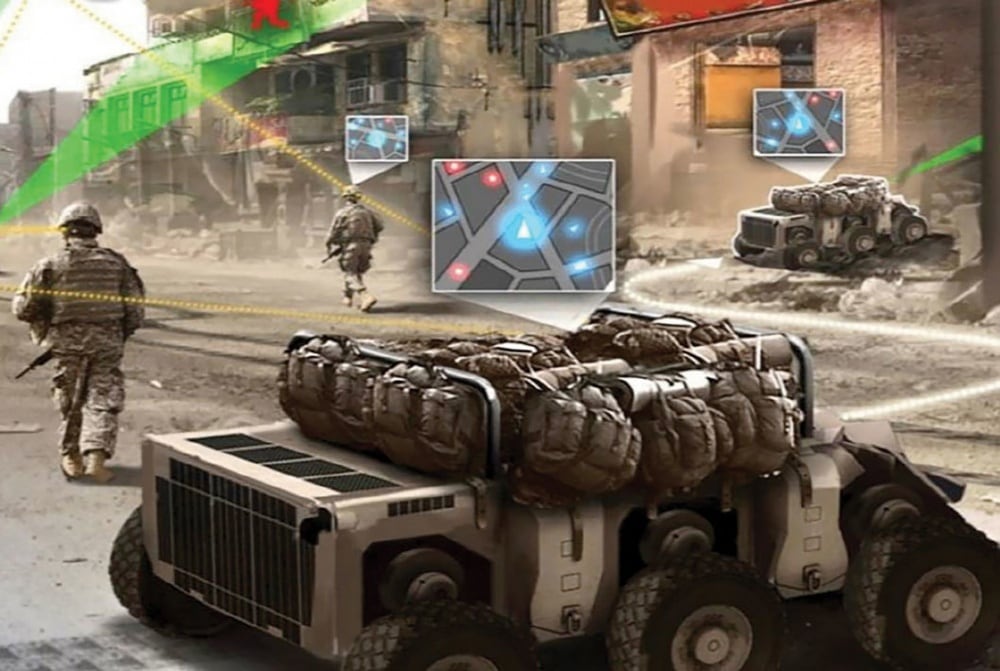
Through a network of robotic eyes and other sensors, a team of nine soldiers have identified three enemy positions and call for support from their loitering positions — unmanned air support, quietly tucked between skyscrapers — before they press on with their assault.
There will be no mad, blind rushes across city streets or unseen shooters popping out of windows or doorways for this squad.
No surprises today.
This robot-heavy urban warfare scenario is what the Army aims to build through a host of manned-unmanned teaming projects that look to allow even the squad-level soldier to get a wraparound vision from nearly any vantage point.
It’s a vision that’s been a long time coming as the concept of having “robotic wingmen” for ground vehicles or “robot battle buddies” taking on the most dangerous tasks for infantry soldiers is becoming a reality as technology catches up with science fiction.
But while that scene multiplies combat capabilities, it also means that soldiers will rely more than ever on technology, even at the most primitive levels of fighting – small unit, close combat – making those same soldiers all the more vulnerable should systems fail.
Robots, robots, everywhere
The Army is finding ways to inject robots in ways both large and small, from deploying pocket-sized drones to Afghanistan, to building unmanned options into its Next Generation Ground Combat vehicle program.
While all of the services have benefited from unmanned aerial drones for decades, putting ground robots into the formation presents a host of new hurdles, according to retired Army Lt. Gen. Thomas Spoehr, director of the Center for National Defense at The Heritage Center.
“On the ground it’s much harder because of the challenges of maintaining communication,” Spoehr said.
The terrain itself, especially off-road or in rubble-strewn urban landscapes, is more challenging.
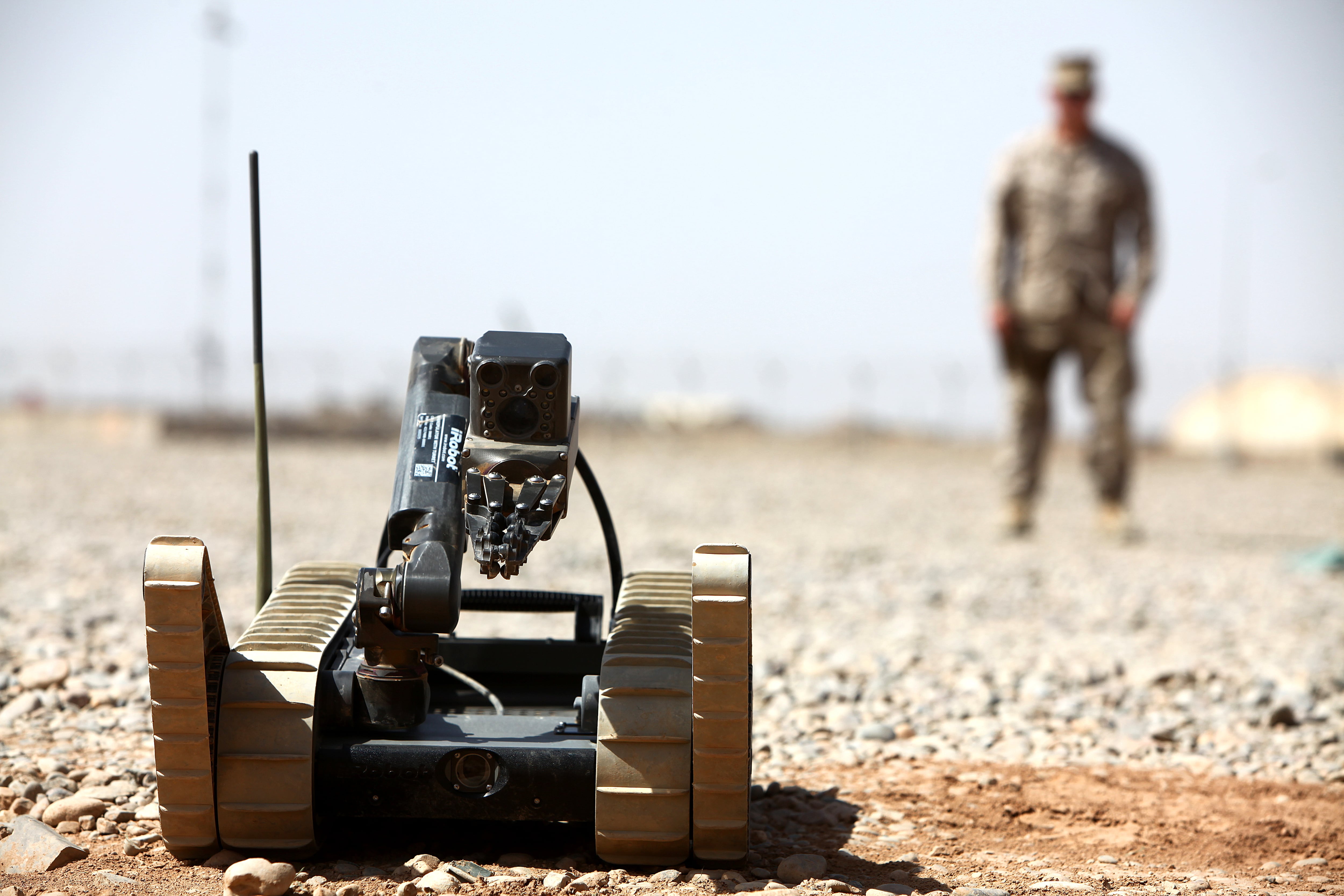
“When was the last time you saw a robotic car going down the road? Well, I haven’t,” he said. “And that’s a road with painted markings on it and traffic signals.”
Despite these challenges, the Army has made progress in getting systems out of the lab and into the field in recent years.
One year ago, the Army announced the large-scale purchase of a pocket-sized helicopter drone made by FLIR Systems. The “Black Hornet” serves as a short range personal reconnaissance system that can shoot both still images and record video.
The small device gives users both control and GPS-guided autopilot. It was first deployed on a test basis with troops to Afghanistan in 2016. Newer versions all for flight times of 25 minutes or longer and better camera and video capabilities.
The Army is focusing on a host of other robotic and artificial intelligence-focused efforts through various challenges to make the infantry platoon 10 times more effective in operations.
In 2018, leaders established the Robotics Center of Innovation at Fort Benning, Georgia. They’ve partnered with universities, such as the Georgia Institute of Technology to go after specific challenges like giving small units a man-portable ground robot for sensing and reconnaissance.
The center has also experimented in recent years with throwable robots to use in buildings, aerial drones that can detect enemy aerial drones and a Small Multipurpose Equipment Transport robotic mule to run up to 60 miles, carrying all the supplies a squad needs for a 72-hour mission and soldier-controlled drone swarms.
The Army also ran “robotic wingman” tests with a major event last year at Yakima Training Center, Washington.
Soldiers from the 2nd Battalion, 3rd Infantry Regiment of the 1st Brigade, 2nd Infantry Division Stryker Brigade Combat Team ran the test.
In it, they were required to navigate an obstacle that included layers of landmines, wire and a deep trench. Soldiers used a Humvee and an M113 armored personnel carrier to provide suppressing machine gun fire, all controlled from a Bradley in a line-of-sight position.
The Next Generation Combat Vehicle program also includes plans for building in ways to remotely control vehicles from it, making a single, manned vehicle capable of fighting in its own ground formation.
But not all efforts have succeeded.
The program to replace the Bradley, the Optionally Manned Fighting Vehicle, was recently cancelled after disqualification left only one contender in the competition. Congress then made drastic cuts to the vehicle’s budget.
The OMFV has been seen as critical to Army ground combat efforts. But top leaders have asked a lot of the project, wanting to have a rapidly ready, power-saving, remotely-controlled, all-weather, all-terrain shooter that also provides survivable protection for a crew of six soldiers.
All roads lead to urban warfare
To date, most of the systems that have been tested in the operating environments of past wars – open terrain woodlands or desert settings.
That won’t pass the test of future fighting, said retired Army Maj. John Spencer, chair of urban warfare studies for the Modern War Institute at West Point.
The career infantry enlisted and officer said the urban environment will be the most challenging soldiers will face and, given rising population centers and instability, where soldiers are most likely to fight.
“None of the Army investment is urban specific,” Spencer said. “We’re talking about signals, the ability to go over an environment, presence of noncombatants, all of these.”
Certain tech can go after very specific problems, Spencer noted, like using drones to look around corners, explore dangerous tunnel or subway systems and see through walls. One of the greatest issues Spencer believes soldiers face is knowing what’s going on around them. What he believes to be most frustrating is that soldiers don’t even know what capabilities they may have available at a given time, whether it’s air support, equipment or supplies.
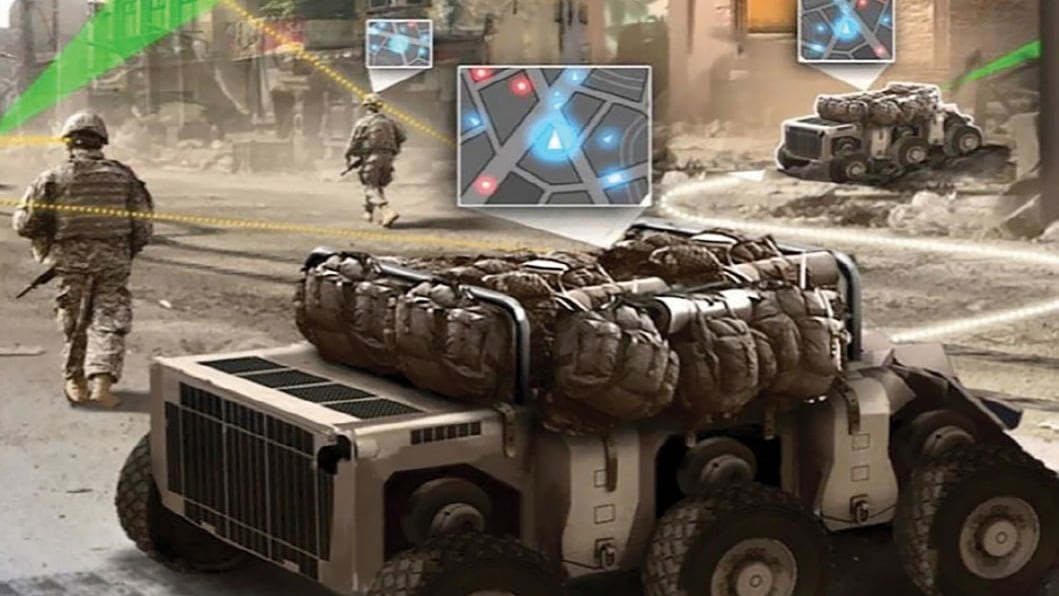
“The biggest challenge I had was information,” Spencer said of his time combat deployment in Baghdad, Iraq. “Who were the right people? Who were the big power players, where’s the crane I need right now? I need GoogleWar.”
An AI-supported system that could give tactical-level units a quick, accurate picture of the information they need, when they need it, would be invaluable, he said.
Shaping the future
How robots will join the ranks of soldiers will change how commanders at all levels conduct operations. But some who’ve watched these developments closely caution that focusing on specific challenges, rather than a grand overhaul of the force is the way to go.
Director of the Technology and National Security Program at the Center for a New American Security, former Army Ranger and author of, “Army of None: Autonomous Weapons and the Future of War,” Paul Scharre told Army Times that, as systems get more sophisticated, more soldier tasks can be handed off.
But not too soon.
“Really this is going to be an evolutionary process over time. As systems evolve over time, they will get into more roles,” Scharre said.
There have been basic forms of AI in some Army systems for decades, such as target identification in aircraft or air defense equipment such as the Patriot missile.
Spoehr sees the new robot tools as a natural fit for a new generation of soldier that’s grown up with having tech always at their fingertips.
“I think this generation is very comfortable getting information through screens and filters,” Spoehr said. “In my generation, we always wanted to fight with the tank hatch open.”
But new technology means controlling one vehicle from inside another vehicle, using at least three different video feeds.
“They’re used to having a third eye going,” Spoehr said. “They’re very comfortable bringing up a window and seeing what’s going on.”
The key for these systems is to give them tasks that take the load off of the soldier rather than adding more work to their jobs.
Early long-range drone systems didn’t operate themselves, instead requiring crews to fly, monitor, refuel and maintain.
The Marine Corps is experimenting with a 15-Marine squad, up two positions from its traditional 13-Marine model. Those new positions include an assistant squad leader and a squad systems operator. The systems operator is tasked with running a squad-level drone and other devices for the squad.
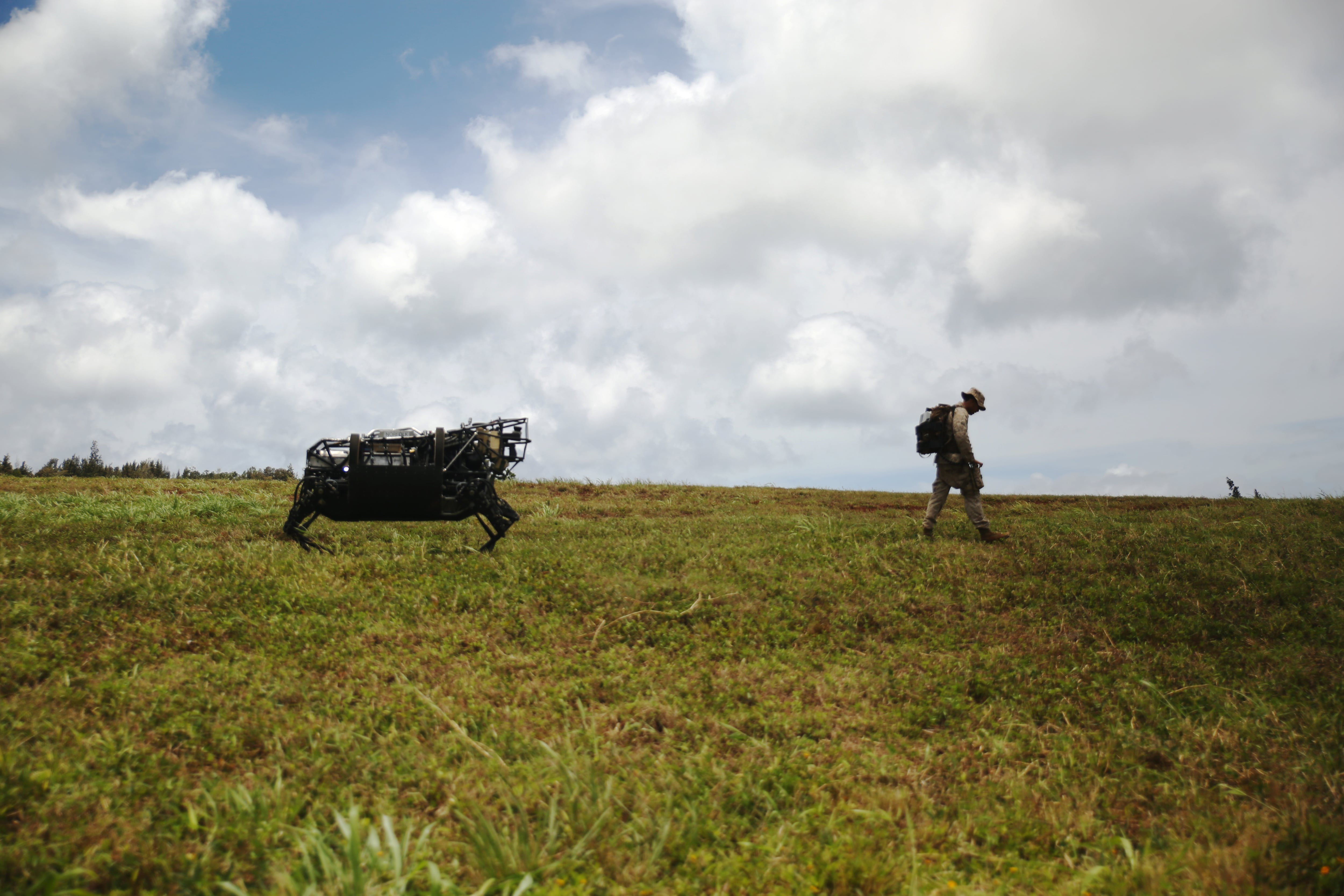
That’s where Scharre has concerns, because some of the new systems cannot run without a dedicated human operator.
“It’s one thing to have one person to work one robot to defuse a bomb or throw up a drone,” Scharre said of singular tasks. But in a more rapid, complex battle, the role of the robots should be to give information and take over routine tasks so that soldiers and commanders can focus on making decisions.
The former Ranger said the Army needs a version of the 1940s “Louisiana Maneuvers” to test out how robots and AI would best work in warfighting as they move forward.
The historic maneuvers, along with other large-scale exercises, helped the Army move from infantry focus to a more mechanized force to meet the challenge of the Axis powers in Europe during World War II.
Too much reliance
But for all of the advantages that robots and artificial intelligence can add to the soldier’s toolkit, experts agree that over-reliance on these yet unproven systems can be dangerous.
“What happens when your [robot] battle buddy fritzs out? You have a liability, not an asset,” Spencer said.
And all of the robotics systems are reliant on a variety of networks. If those fail, so too might the crucial systems and support that’s being designed.
The Army, as a result, aspires to build a “self-healing network,” Spoehr said. Such a network would be resilient or rapidly repairable in the case of interference, jamming, attack or GPS denial.
“They’re going to have to have that to bring about robots in a big way,” he said.
Scharre said that designers and Army leaders have to ensure that the systems are first controlled at the tactical level, otherwise they’re too vulnerable.
“You want situations in manned-unmanned teaming where the local wingman is controlled by a relatively local asset,” Scharre said. “Communications networks are short range. It’s an Abrams [tank] controlling a ground robot, and the tank is nearby.”
Scharre described a situation during his service when, in a firefight in a near-ambush, the radio operator couldn’t reach higher headquarters for fire support. The radio was dead.
It wasn’t a bullet hole or dead battery that took it out. The cable had kinked up on a new wrist-mounted display intended to make a soldier’s job easier when running the system.
What was meant to add convenience also added vulnerability.
Todd South has written about crime, courts, government and the military for multiple publications since 2004 and was named a 2014 Pulitzer finalist for a co-written project on witness intimidation. Todd is a Marine veteran of the Iraq War.


